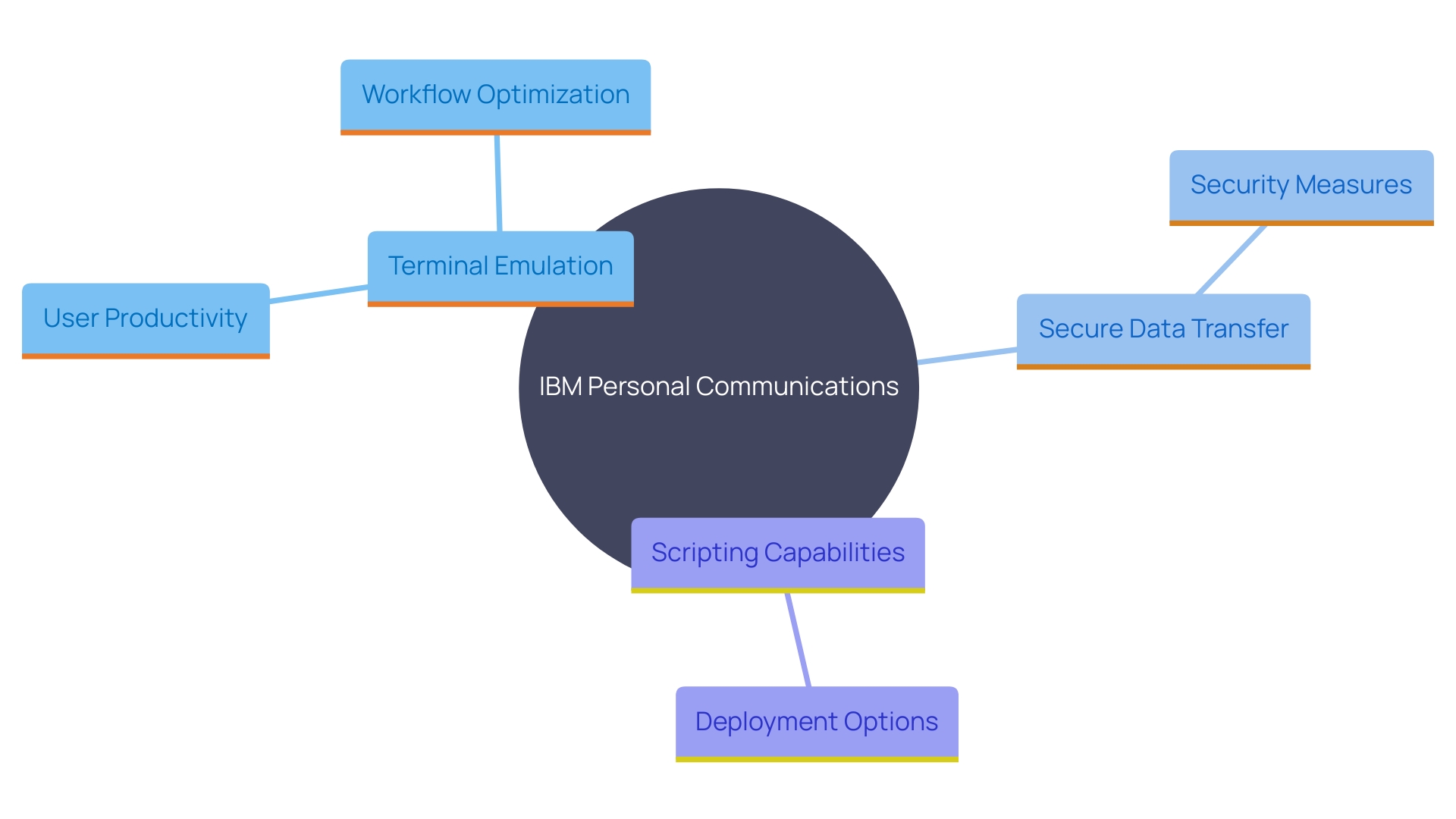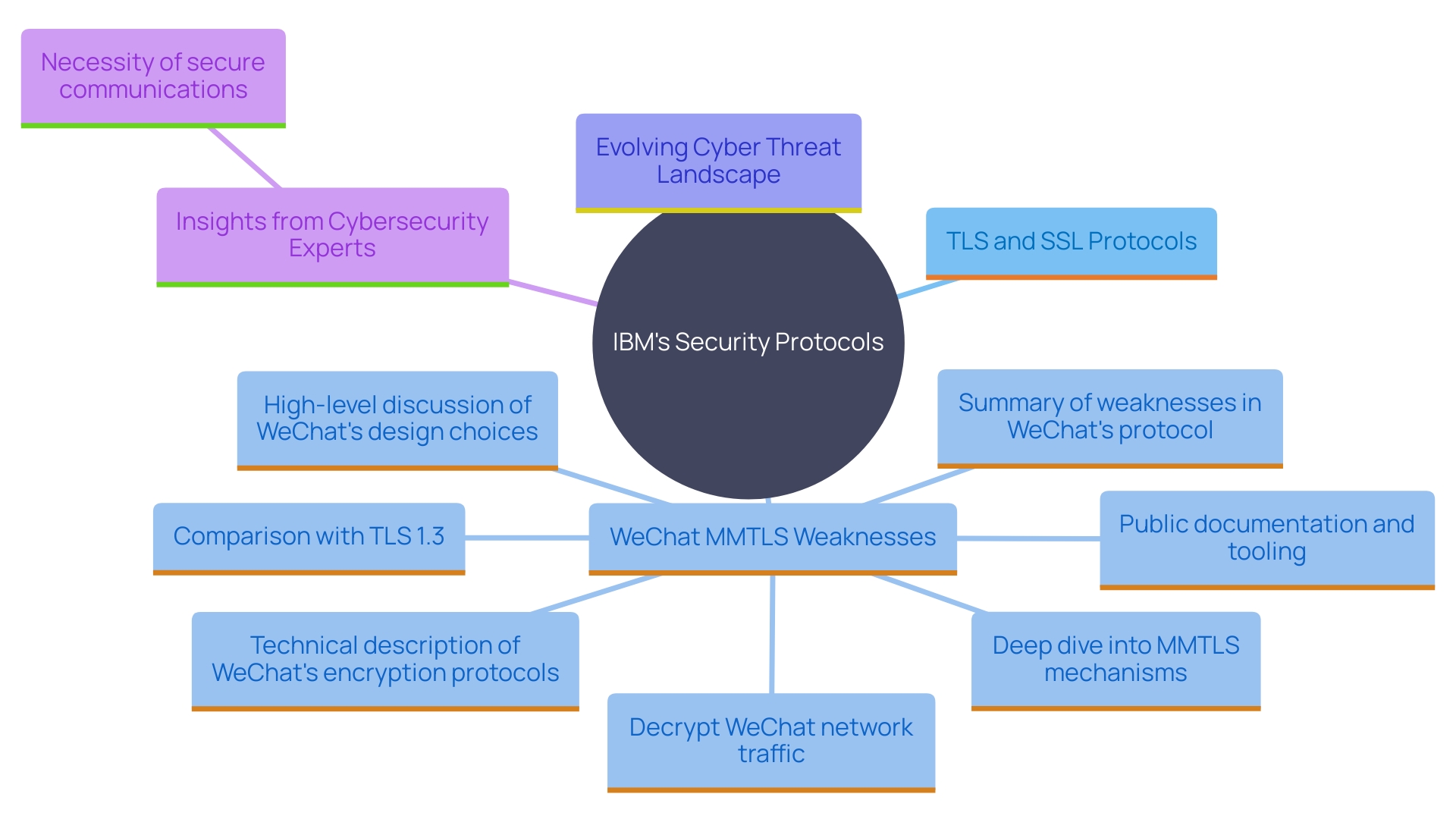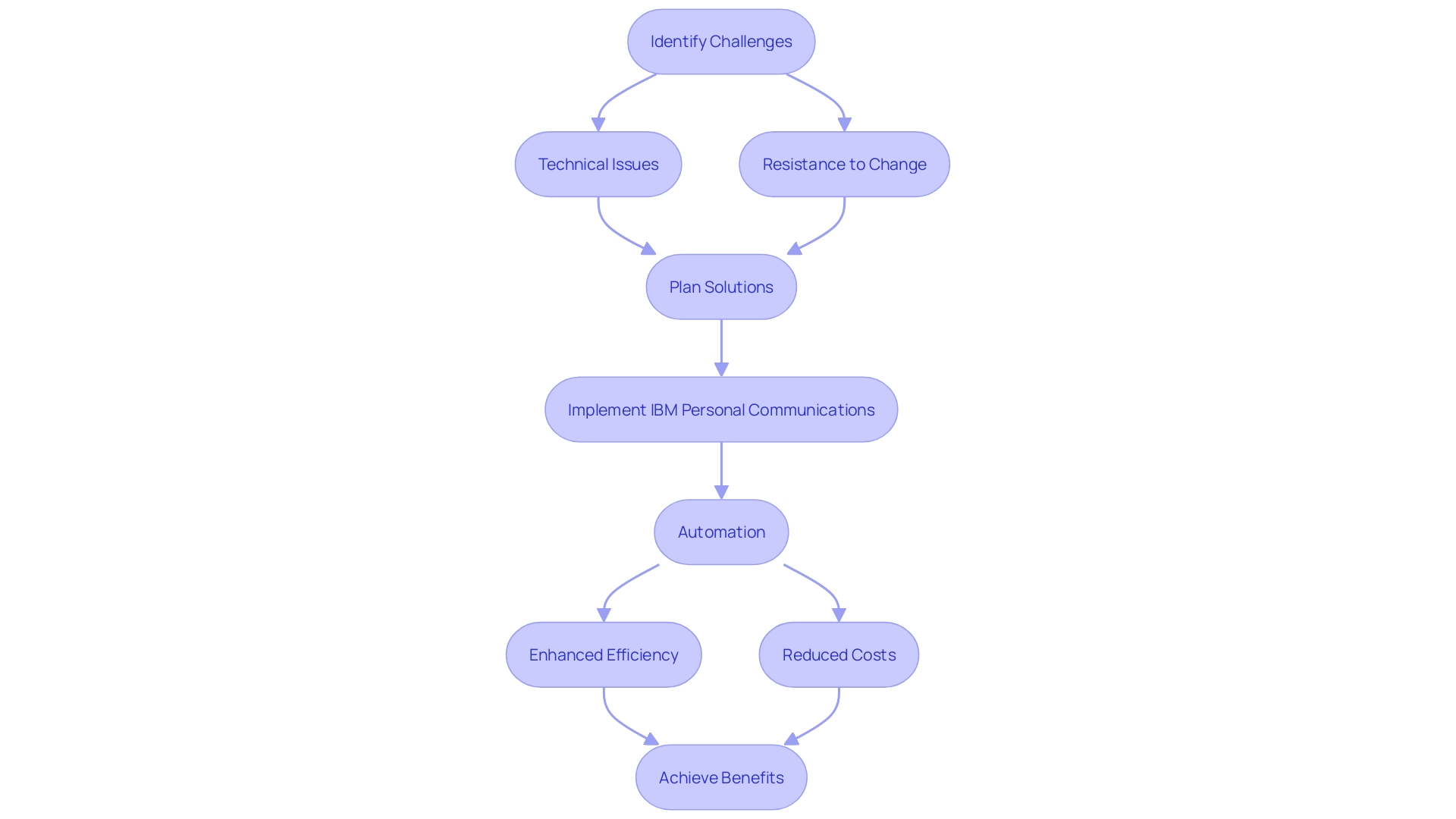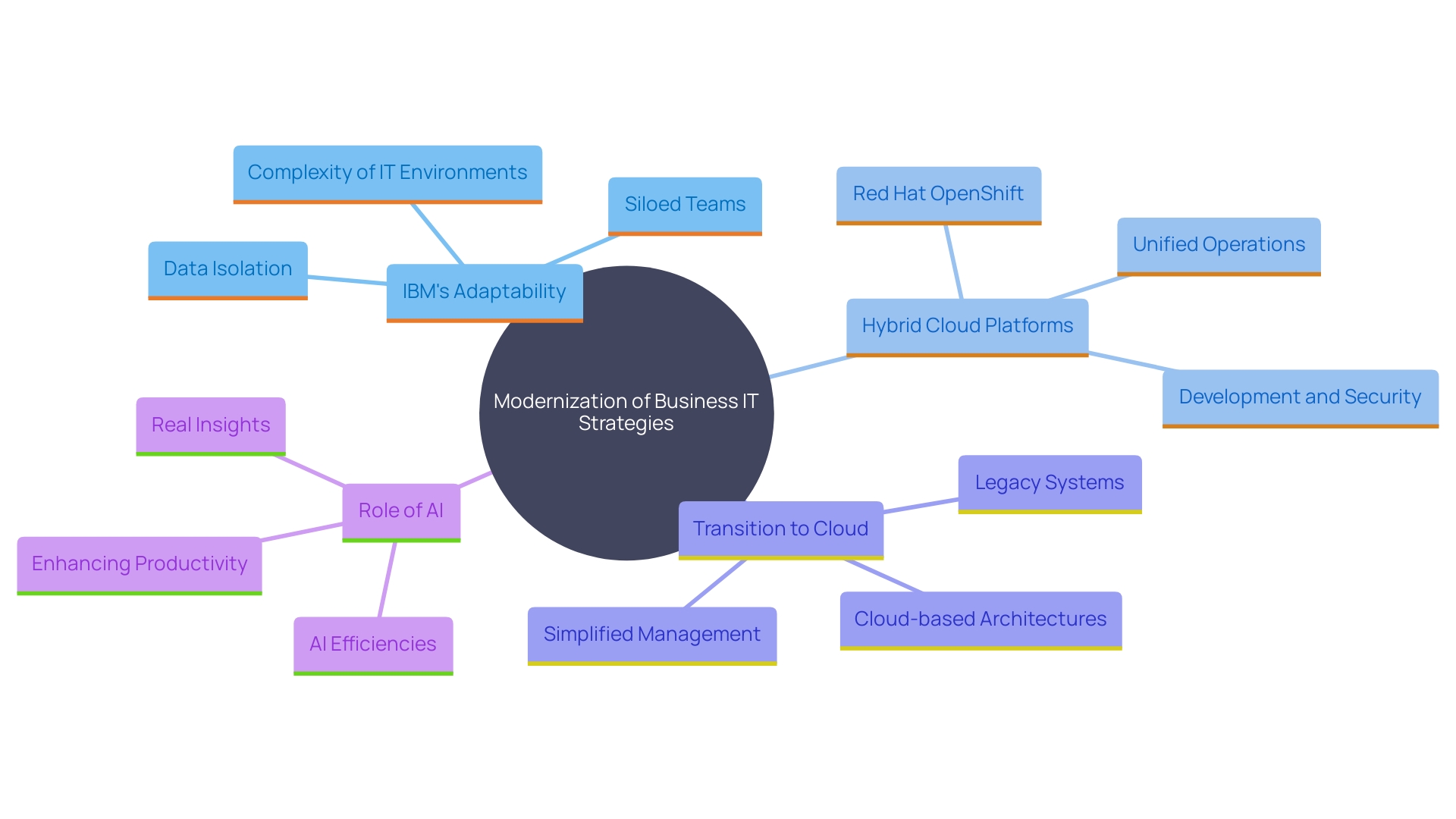Introduction
Embracing advanced technology solutions is crucial for operational efficiency and security in today’s fast-paced business landscape. IBM Personal Communications offers a robust suite of features designed to streamline workflows and enhance productivity while maintaining stringent security standards. With advanced terminal emulation, secure data transfer, and integrated scripting capabilities, this solution ensures seamless interaction with legacy systems through a modern interface.
Its adaptability, supporting both on-premises and cloud deployment, provides businesses with the flexibility to tailor their environment to specific needs. In addition, IBM Personal Communications integrates comprehensive security protocols, protecting against unauthorized access and data breaches. Leveraging these advanced security measures, organizations can ensure data integrity and confidentiality across various networks.
Moreover, the integration and automation capabilities of IBM Personal Communications transform how businesses operate, reducing manual intervention and minimizing errors. This seamless connectivity with enterprise applications enables automated workflows, modernizing legacy systems without disruptions. As organizations navigate the complexities of modern IT environments, IBM Personal Communications offers the scalability and flexibility needed to maintain productivity and foster innovation.
By supporting virtualization and cloud-based deployments, it prepares businesses for future advancements, ensuring they remain competitive and efficient in an evolving digital landscape.
Key Features and Enhancements
IBM Personal Communications delivers a comprehensive suite of features that significantly boost user productivity and optimize workflows. This solution includes advanced terminal emulation, secure data transfer, and integrated scripting capabilities, ensuring seamless interaction with legacy systems through a modern interface. Supporting multiple protocols and providing customizable user settings, it enables entities to tailor the environment to their specific operational needs. Enhanced security measures, such as encryption and multi-factor authentication, protect sensitive information and ensure data integrity. Furthermore, organizations can choose between on-premises deployment for complete control and privacy or cloud deployment for flexibility and reduced maintenance costs. This adaptability makes IBM’s software an essential tool for businesses striving to improve operational efficiency while upholding strict security standards.

Security and Connectivity
In today’s digital landscape, security is paramount. IBM’s software addresses this need by incorporating comprehensive security protocols designed to protect against unauthorized access and data breaches. The solution supports secure connections over various networks, including VPNs, ensuring that data transmitted between users and systems remains confidential. Furthermore, the integration of TLS and SSL protocols provides an added layer of security, allowing for secure communications across all endpoints.
The importance of secure communication cannot be overstated, especially in light of recent findings. For instance, an analysis of WeChat’s proprietary encryption protocol, MMTLS, revealed several weaknesses due to deviations from standard cryptographic practices. This emphasizes the essential requirement for strong security protocols similar to those put in place by IBM, which conform to recognized standards to avoid weaknesses.
Moreover, the cyber threat landscape is constantly evolving, with Gartner reporting that a company’s attack surface can see over 300 new services monthly, contributing to significant exposure risks. By utilizing advanced security protocols, IBM ensures that sensitive information stays safeguarded against these constant threats.
Incorporating insights from cybersecurity experts, it’s clear that focusing on secure, encrypted communications is essential for mitigating risks. As highlighted in a recent webinar, comprehending and tackling key threats and developments in cybersecurity is crucial for entities to stay ahead of potential attacks. ‘IBM’s method for secure connectivity exemplifies this proactive stance, providing peace of mind in a complex digital environment.’.

Integration and Automation
Incorporating IBM Personal Communications with the current IT infrastructure provides a transformative benefit for entities striving to enhance their operations. This integration facilitates seamless connectivity with various enterprise applications, enabling automated workflows that drastically reduce the need for manual intervention. By leveraging built-in automation features, businesses can significantly enhance efficiency, minimize errors, and ensure consistent data updates across all systems. This capability is especially beneficial for companies looking to modernize their legacy systems without causing disruptions to current processes.
For example, a large U.S. financial services company faced significant performance issues and delays due to its monolithic application architecture. By modernizing its application architecture and incorporating automation, the company was able to streamline workflows, reduce costs, and improve performance. This case highlights the broader potential of automation to spur economic growth, boost productivity, and minimize losses, even as it displaces certain jobs.
Despite the clear benefits, implementing automation projects can be challenging. Statistics show that 90% of automation projects fail due to technical issues, 37% due to implementation costs, and 25% because of a lack of overall vision or strategy. Moreover, the third biggest challenge to implementing automation is resistance to change. However, by adopting a wide variety of integration techniques and a platform approach that supports multiple methods, entities can overcome these obstacles and achieve significant operational efficiencies.
The ability to integrate advanced technologies like AI and cloud with existing systems creates a well-coordinated environment that optimizes data and application portability. As businesses continue to adopt these technologies, they must evaluate how they align with long-term organizational needs to leverage their full potential effectively. This strategic approach to integration not only addresses the current state of data problems and implementation challenges but also sets the foundation for future growth and innovation in the automation landscape.

Modern IT Environment Considerations
As companies evolve, their IT environments become increasingly complex. IBM’s software is created to adjust to these changes, providing versatility and scalability to satisfy the needs of contemporary businesses. With its support for virtualization and cloud-based deployments, businesses can deploy this solution seamlessly across various platforms and devices. This adaptability ensures that entities can maintain productivity regardless of their operational environment, whether on-premises or in the cloud, facilitating a smoother transition into advanced technological landscapes.
Supporting this scalability, IBM’s hybrid cloud platform and Red Hat OpenShift have been pivotal for over 4,000 government and corporate entities in critical infrastructure areas such as financial services, telecommunications, and healthcare. These entities rely on IBM to streamline business processes, reduce costs, and gain a competitive edge in their industries.
Moreover, the push towards modernization is evident in examples like Lincoln Financial’s migration from legacy systems to a dynamic cloud-based architecture. As Rob Klaczak, Senior Vice President at Lincoln Financial, notes, the primary goals were to reduce operating costs, manage expenses from specialized software, and transition to a more flexible environment. This transformation, completed in under two years, highlights the efficiency and agility that modern IT solutions can offer.
IBM Individual Interactions not only supports current IT needs but also prepares organizations for future advancements. This includes the growing demand for AI-driven solutions that can automate tedious tasks, freeing up employees for more meaningful work. As demonstrated by an engineering team that automated data extraction from 2,000 PDF documents, AI integration can significantly enhance productivity and provide greater value to the company.
In a landscape where inflation and digital modernization efforts are driving IT leaders to revisit cloud costs, IBM Personal Communications stands out by offering a comprehensive, scalable, and cost-effective solution that aligns with the strategic goals of modern enterprises.

Conclusion
Embracing IBM Personal Communications presents a strategic advantage for organizations seeking to enhance operational efficiency and security. By leveraging its suite of advanced features, including terminal emulation, secure data transfer, and integrated scripting capabilities, businesses can modernize their legacy systems while maintaining stringent security standards. The adaptability of the solution, whether deployed on-premises or in the cloud, provides the necessary flexibility to meet diverse operational needs.
Security remains a top priority in today’s digital landscape, and IBM Personal Communications addresses this challenge with robust protocols designed to protect sensitive information. By supporting secure connections and adhering to established standards, organizations can safeguard their data against evolving cyber threats. This proactive approach ensures that businesses can operate with confidence, knowing that their information remains protected in a complex environment.
The integration and automation capabilities of IBM Personal Communications further transform organizational workflows. By facilitating seamless connectivity with enterprise applications, the solution reduces manual intervention and minimizes errors, driving efficiency across operations. As businesses modernize their IT infrastructure, the ability to incorporate advanced technologies such as AI and cloud solutions will be crucial in optimizing processes and fostering innovation.
In a rapidly changing IT landscape, IBM Personal Communications positions organizations for future growth. Its scalability and support for hybrid cloud environments enable businesses to adapt and thrive, ensuring they remain competitive. By adopting this comprehensive solution, companies can not only address current operational challenges but also prepare for the technological advancements of tomorrow, ultimately driving productivity and success in an evolving digital world.

